
Iceland
The country of over 10,000 waterfalls, beautiful landscapes, Northern Lights that ribbon dance throughout the sky, some of the kindest people I have met in my world travels, and so much more. Did you know Iceland didn’t become a popular destination until 2010 when a volcano erupted causing a halt in many European flights? Today it is one of the most popular vacation stops for nature lovers. In this post I will break down my 15 day trip where I did a solo drive in a campervan around the Ring Road, Golden Circle, Peninsula, and West Fjords.

When to Visit?
One of the great things about Iceland is that you can visit in the Summer and come back in the Winter to do the exact same trip, but everything looks different. I chose to go at the end of October because campervan rentals are cheaper, sites are less crowded, and I wanted to see the Northern Lights. The cons to visiting at this time: It’s very cold, some sites/roads are closed due to the weather, and the days are shorter.
Ways to Travel
You have a few options regarding how to get around when you are visiting Iceland.
- Tour Bus you can take where you jump on a bus that takes you around to certain tourist stops
- Rent a car and stay at Hostels, Hotels, or Airbnbs, or camp in a tent along the way
- Rent a campervan and stop at campsites along the way
I chose to rent a campervan through Campervan Iceland because it allowed me the flexibility to travel as far as I wanted on any given day and stop whenever and wherever I wanted. I didn’t need to make reservations. Trust me when I say, you will want to pull over to take pictures every few miles! Also, since I was traveling solo, it was the best option for me financially.

My particular campervan was an automatic 2016 VW Caddy. It is equipped with:
- Pillows, sleeping bags, bed sheets
- Electric cooler
- Dishware, portable stovetop, pots, pans, etc
- USB plugs
- 4G Wifi–5GB
- Table and Chairs
- Water Jug (Iceland tap water is drinkable)
- Tires with spikes (spare tire)
- Storage space for your clothes
There are many campsites along the way, most of which have wifi, showers, bathrooms, kitchens, etc. During the winter months some of them close down, but if you stay to the southern coast, most of those stay open year round.
The Ring Road
I arrived to Reykjavik at 4:30am, got my campervan, and was on the Ring Road aka Route 1 aka Þjóðvegur by 6:00am. Now, I gave myself 15 days in Iceland because durning the winter time the days are shorter and the roads/weather unpredictable. This was my itinerary, but of course you don’t need to stick to this. Go with the flow and enjoy!
Day 1:

Seljalandsfoss will be your first stop on the Ring Road. This waterfall that has a drop of 200ft, will blow you away as you walk the encircled path that takes you behind the waterfall!

Gljúfrafoss is just a few hundred feet away from Seljalandsfoss off Route 249. Once you wander through a thin crack in the cliff, you will be amazed by the beauty of this majestic waterfall.

Seljavallalaug is one of the oldest swimming pools in Iceland. It was built in 1923 and is fed by a close by natural hot spring. The water can be anywhere from 68-86°F.

Skogafoss is one of the countries largest waterfalls with a width of 49 ft and a drop of 200 ft. It’s surrounded by moss covered stone cliffs, you can take the stairs up to the top for another incredible view of not only the waterfall, but the surrounding landscape.
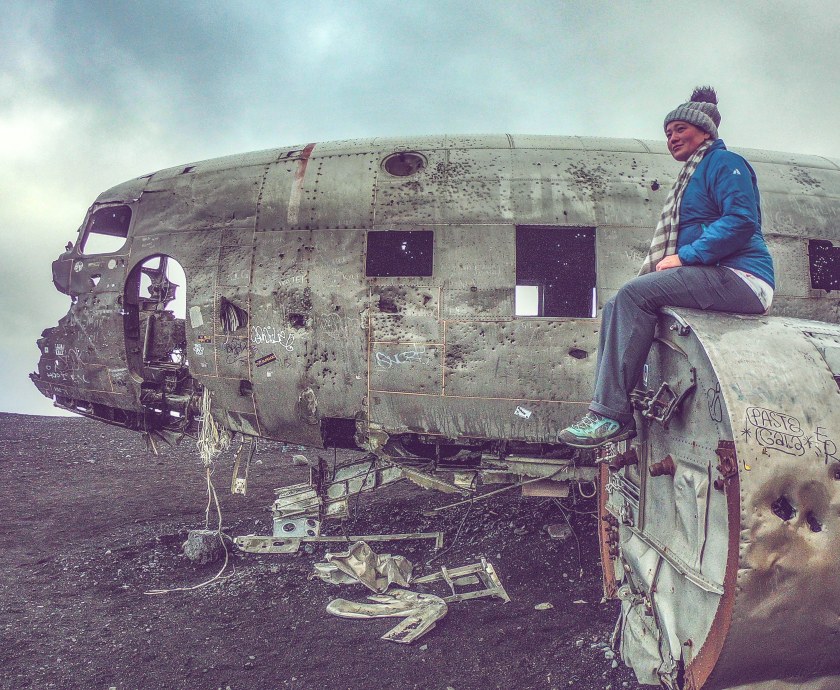
DC-3 Plane Wreckage on Sólheimasandur black sand beach had always been on my bucket list. This was an American Naval plane that was forced to crash back in 1973. Don’t worry, everyone survived. The wreckage was left there and any usable pieces have been taken leaving the outer shell of this plane to the mercy of the rough Icelandic weather. The road to it was shut down a few years ago, however, there is a parking lot with a pretty 2 mile walk to the plane site. It was crowded when I got there and difficult to snap a picture without anyone else in it.


Dyrholaey (and Icelandic Horses) is close to your first stopping point for the night. When I turned onto the street that takes you to this beautiful coast front, there were a heard of Icelandic horses. I got out to take some photos and the walked right up to me! Definitely check them out if they are there. There are a few places you can stop to see the Dyrholaey. The current and winds were so high this day that I only went to this stop and it was a little difficult to see the arches in the stone cliff, but still very pretty.


Reynisdrangar are a cluster of Basalt Sea Stacks located under the mountain Reynisfjara. One of Icelands most popular black sand beaches, you must be careful of the unpredictable waves that have been known to come out of nowhere and sweep tourists into the ocean. Note: in the background of the 2nd picture you can see the Dyrholaey
Vik is a good stopping point for the night. Depending on how long you stay at each tourist stop, you may want to pass the stops Dyrholaey and down and backtrack to see them on day 2 since they are fairly close to Vik. Also, there is a famously pictured red roofed church that overlooks this small town to check out, but nothing much other than that.
Day 2:


This day I decided to take an ice cave trekking tour with Southcoast Adventure to the Katla Ice Cave. The tour starts in Vik, however, they can pick you up from Reykjavik for an extra charge. This is an ice cave that melts and reforms every year under a volcano. It is an easy trek for anyone and Southcoast Adventure provides helmets, flashlights, and micro spikes for your boots if needed. I definitely highly recommend it!
Day 3:
After the ice cave trek on day two, I drove to the Skaftafell Campsite for the night.


Skaftafell is an area located in the Vatnajökull National Park. From the campsite you can walk the trail to get a better view of the towering ice topped mountains and the Svartifoss waterfall. This waterfall drapes over large basalt columns. There is a small path that gets you pretty close to the waterfall.
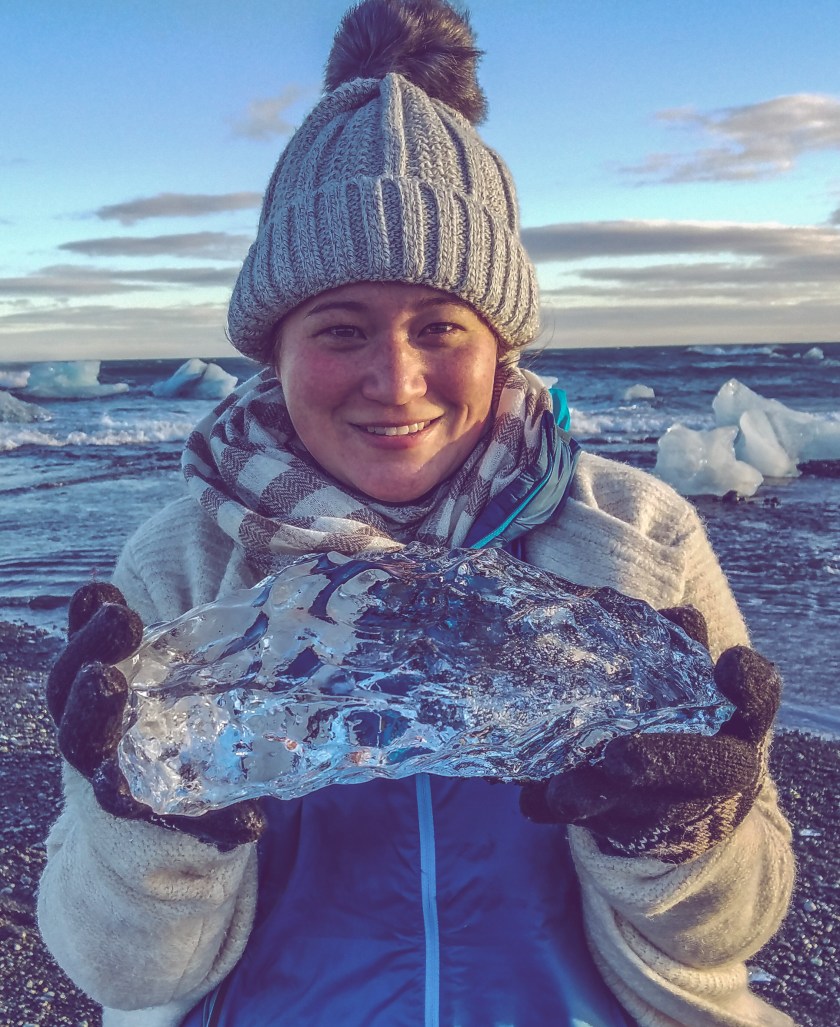
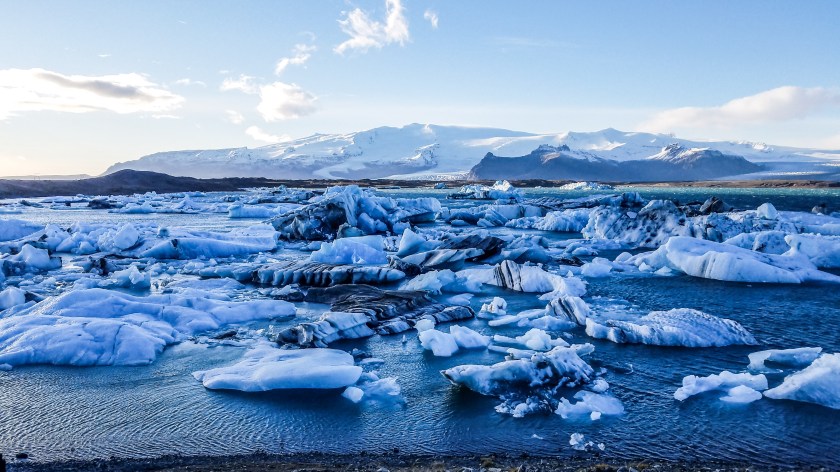
Diamond Beach and Jökulsárlón glacier lagoon are located across the street from one another. The glaciers from Jökulsárlón glacier lagoon are pulled out to sea where the waves wash over them giving them a clear shine appearance before getting pushed onto the black sand beach. This beach is a favorite of many since during some seasons seals have been know to hang out in this location and you can even spot orcas from the beach… although there weren’t any of either when I was there. Unfortunately, due to global warming it is expected that the glaciers and ice on diamond beach will be gone within a decade!
Höfn is known as the lobster capital of Iceland. I spent the night at the campsite here which cost 2100 isk. However, if I had known, I would have stayed on the Stokksnes Peninsula.
Day 4:
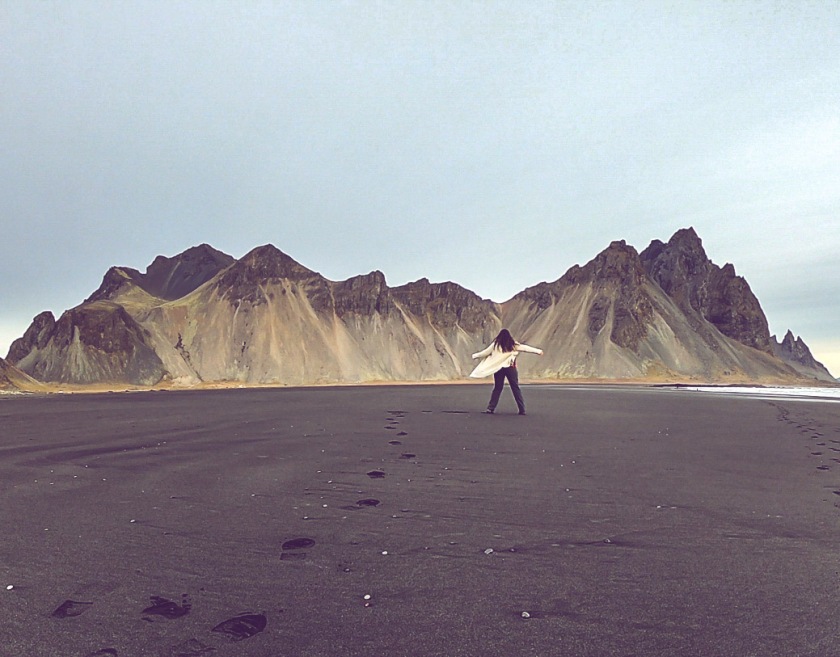
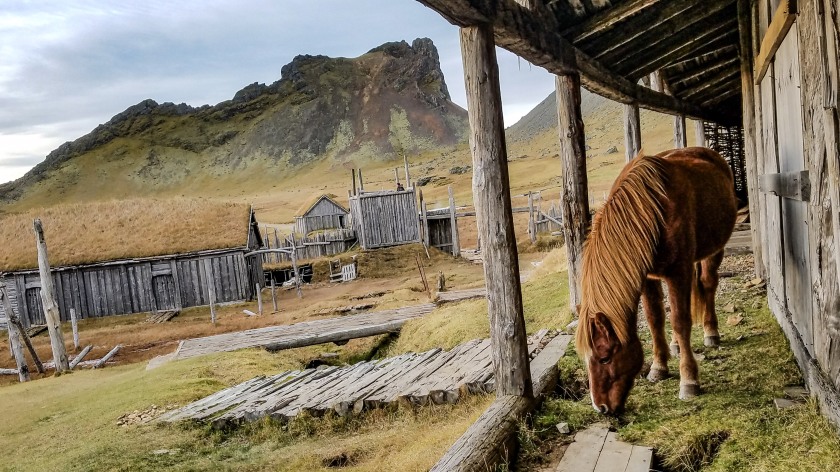
Stokksnes Peninsula is home to the Vestrahorn Mountain, which reaches up to 1490ft peaks and can be viewed from a black sand beach. There is also a recreation of a Viking Village with shacks that date back to the 1900s. In the Viking village you will find friendly Icelandic horses free roaming. Stokksnes is private property so there is an 800 isk fee to visit. However, if you stay at their campsite that costs 2000 isk, then you get free access to the rest of the property.
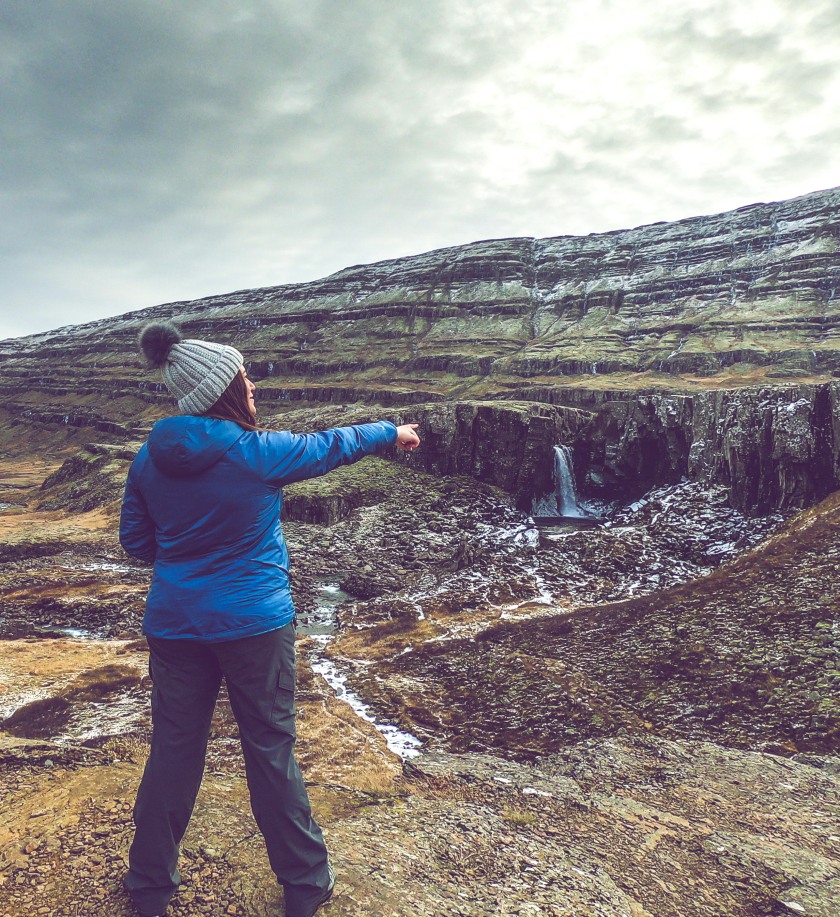
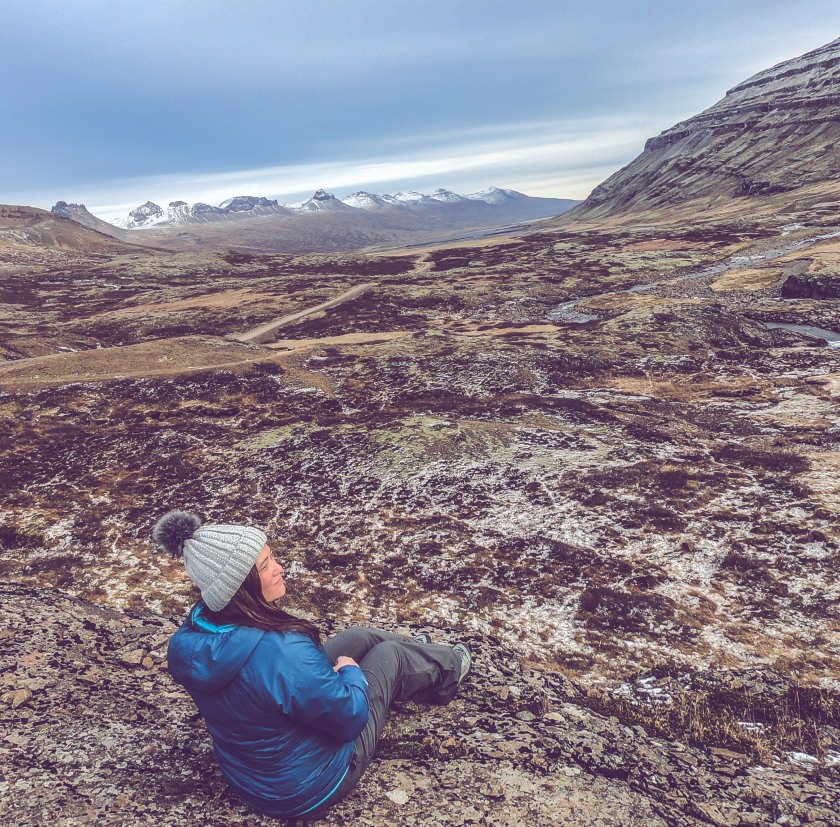
Folaldafoss waterfall is located in the Oxi Pass. When I arrived, I found myself to be the only person there for miles around. I was so relaxing to just sit there and listen to nature without anyone talking or hearing cars in the background. I also took this opportunity to scream as loud as I wanted to simply because I could and it felt really good!
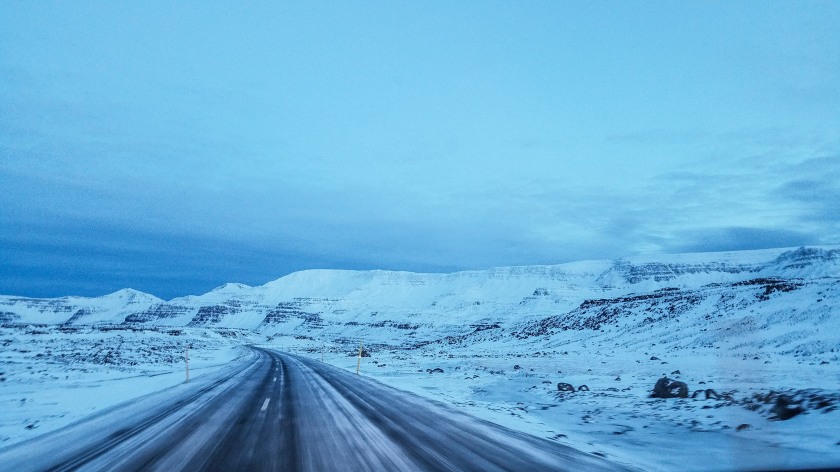
From here you can choose to get back on Route 1 and take it up the East cost, but that will add about 4hrs to your trip. I decided to cut through the Oxi Pass to Seyðisfjörður, which was 1 and a half hour drive instead. However, with the winter roads, it proved to be a bit nerve wrecking.
Day 5:
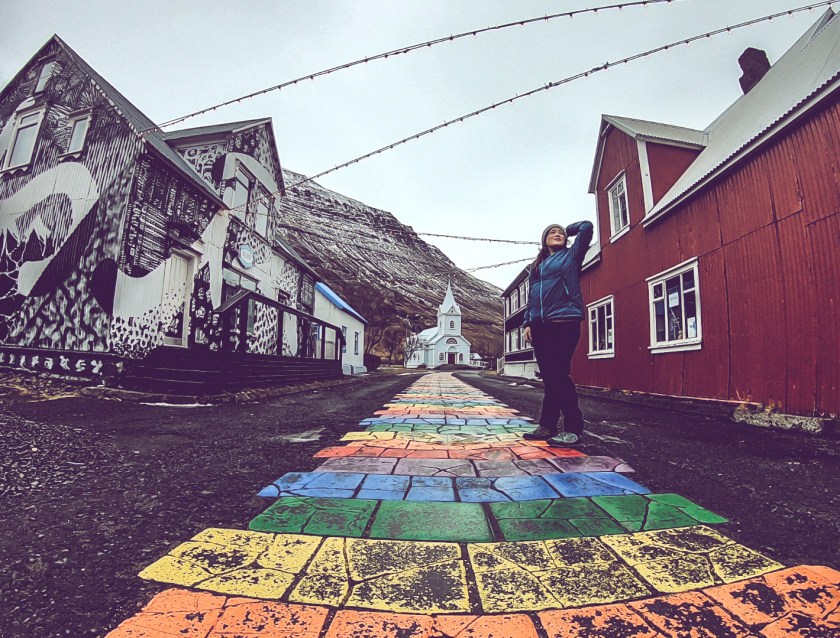
Seyðisfjörður is a small town literally surrounded by mountains. It’s best known for the “Blue Church” with rainbow walkway that was built in 1894 in a different location, but was moved to Seyðisfjörður in 1920 after it had been damaged by strong winds.
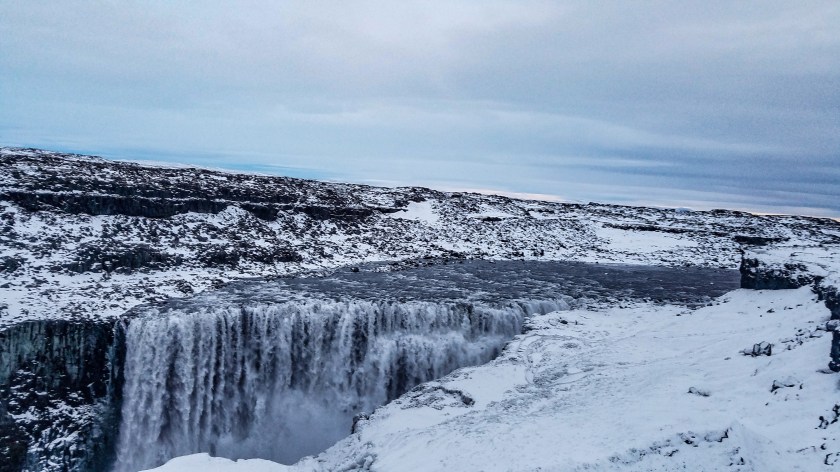
Dettifoss Waterfall is the most powerful waterfall in Iceland and the largest as far as water output. There are two entrances, East and West. The West entrance is a gravel road and not used as frequently so is usually not as crowded, the East entrance road is paved. It’s about a 10 minute walk to the waterfall from the parking lot.
I stayed the night at the Vogar Travel Service Campsite in Mývatn.
Day 6:
Mývatn, you’ll know you reached it when you get a large whiff of rotten egg smell. This is from the natural hot springs/hot sulfuric gases in this area. True story– my first thought was, “man, I must really need a shower.” This area has some incredible sites that shouldn’t be missed.
Krafla Viti crater– In 1724 the Viti Crater was formed during a massive eruption that lasted 5 years. It is now filled with clear aqua blue water and surrounded by mountains. Unfortunately, when I went the water was frozen, so it just looked like an ice skating rink.
Námafjall is an area with multiple bubbling hot sulfuric mud springs. It’s pretty cool to see, but be sure you don’t spend too much time here since the fumes can be harmful if inhaled for long periods.

Grjótagjá Cave is where Jon Snow from Game of Thrones loses his virginity. It is a lot smaller than I expected, but very beautiful. There is a warning about falling rocks and to enter at your own risk. This is also private property and swimming here is not permitted.

Hverfjall Crater is a calf burner. You must hike to the top, which doesn’t take long, but definitely get the heart pumping. It’s about a half a mile in diameter and 1300ft high. Here you will get some great views of Myvatn from the top.

Goðafoss Waterfall is on the way to the next town. There are pathways you can walk to see the waterfall close and far away. It was a cool experience getting so close to the top of such a powerful waterfall.
Akureyri, called the capital of the Northern Territory, is where I stopped for the day. There is a church built in 1940 with stained glass windows depicting Icelandic Christianity. There is also a botanical garden.
Day 7:
After doing to sightseeing in Akureyri, I headed to Hvítserkur.

Hvítserkur– A 15m high basalt with two arches in it giving the appearance of a dragon drinking from the ocean. It is located on the Vatnsnes Peninsula in the Northwest of Iceland. The road to get there is a bit bumpy and once I arrived, I couldn’t find a path to take me down to the beach from the observing deck. So I followed the crowd and climbed down the side of the “cliff” but more like scooted down on my butt while everyone walked past me.
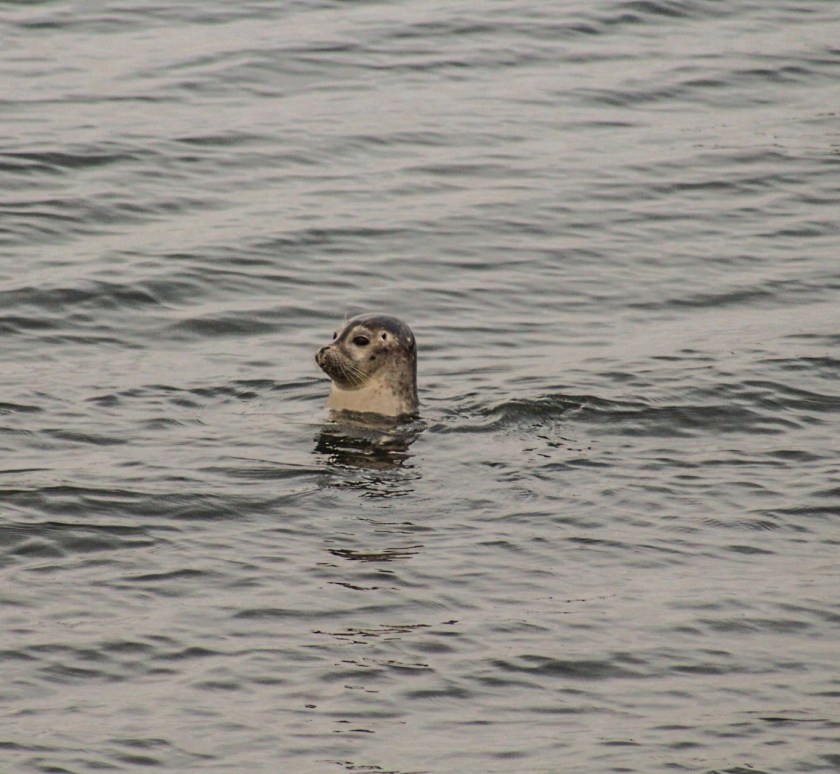
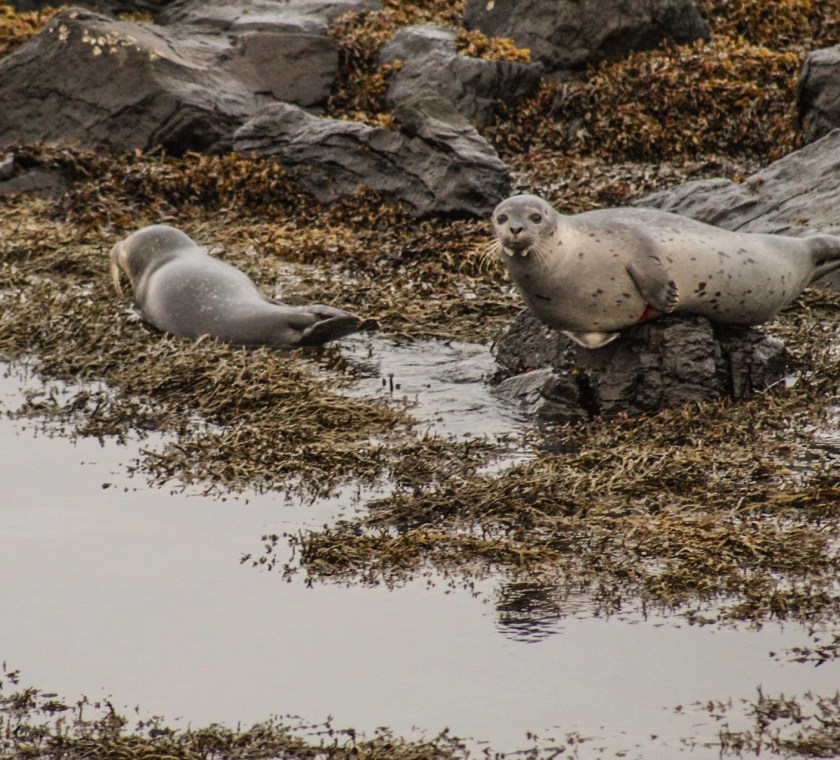
Hvammstangi is the next town I visited. It is known as the town of the Seals. The Icelandic seals don’t hang out around the main town, but further up the Peninsula. If you stay on the same road coming into town it will eventually turn into a gravel road. Take this road up for about 30-45 minutes until you see the signs with Seals. One place I found them was at the end of a path I took that was located on a campsite with a bunch of sheep roaming in the area too. Look for a house with a green roof.
Day 8:

Hraunfossar was my FAVORITE waterfall(s). While I was there in the winter time everything was covered in snow and the plants encased in ice. The dark blue water flowed over the black sand making it look like a black and white photo with the exception of the water. It was beautiful. There were about 20+ small waterfalls that spanned out over half a mile!

From here I started my drive to Sytkkisholmur in the Southwest Peninsula. There is a little shop that I stumbled into where all products are well priced and hand made by locals. Definitely check it out.
Snæfellsnes peninsula
Day 9:

Stykkisholmur is where you can take a ferry from the Peninsula to the West Fjords. My plan was to drive around the Peninsula and then go up the to West Fjords and drive back down to Reykjavik.
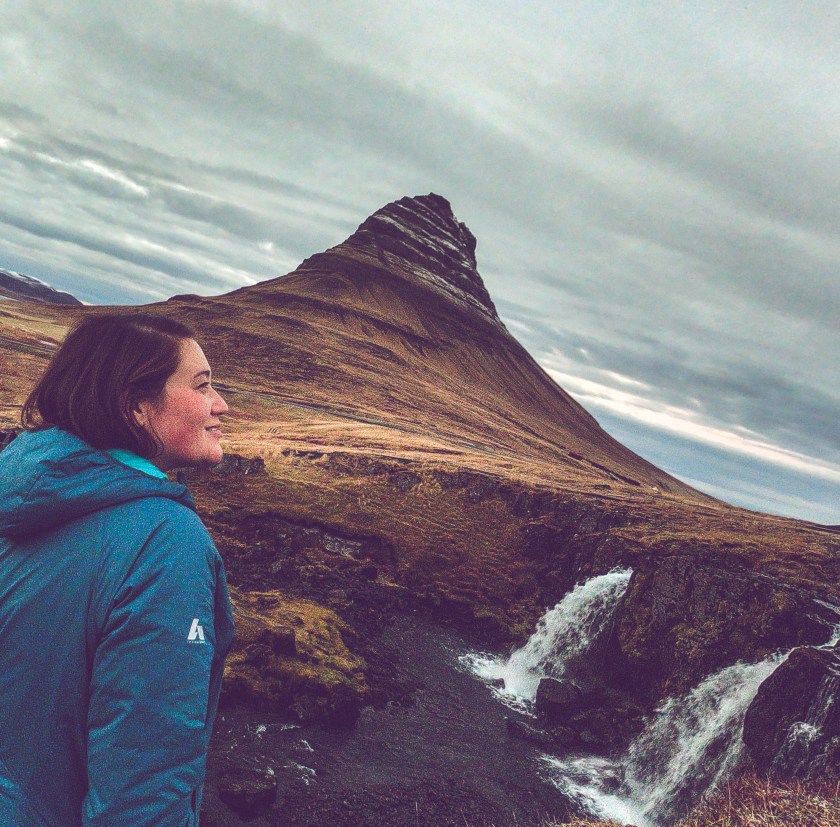
Kirkjufell Mountain is a 1519ft tall mountain seen in shows like Game of Thrones and The Secret Life of Walter Mitty. It is the most photographed mountain in Iceland.

Gatklettur Arch, also called the Hellnar Arch, is surprisingly not located in Hellnar, but the town next to it called Arnarstapi. While I was there, I couldn’t find the other arch that you can walk across, but was later told that it’s located further down the path too the right of this arch.

Búðir Church is the oldest church in Iceland dating back to 1702. The church has been restored over the years, but a few pieces are still the originals including the bell, door knocker, and some of the wood.
West Fjords
Day 10:

I had plans to take the West Fjords by storm, but instead the storm took me. Seatours is currently the only ferry company out of Sytkkisholmur to Brjánslækur in the West Fjords. Only about 10% of people who visit Iceland also make it to the West Fjords. However, the West Fjords are known for their geothermal hot springs (aka Hot pots) and bird watching. It was too late in the year when I went to visit for bird watching, but the locations still looked incredible in pictures and I wanted to check them out. Unfortunately, a storm was moving in so I had to get out asap, but not before I saw the Dynjandi waterfall.

The Dynjandi Waterfall is the largest waterfall in the West Fjords at 328ft tall and had multiple tiers to it. There is a path going up that allows you to hike up to the base of the highest part of this waterfall.
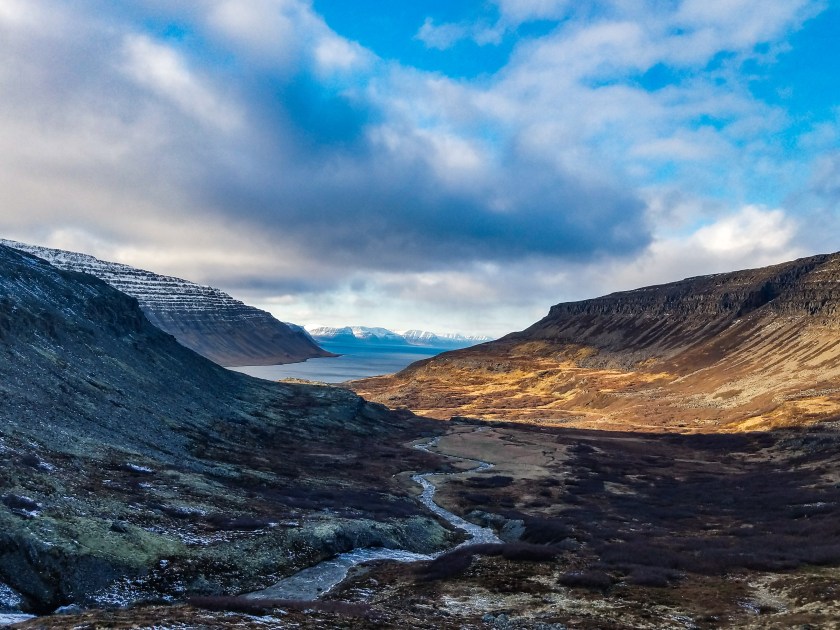
Here’s what I wanted to do in the West Fjords:
Day 11– was spent fighting my way through a crazy Icelandic snow storm to get back to Reykjavik.
Reykjavik
Day 12:
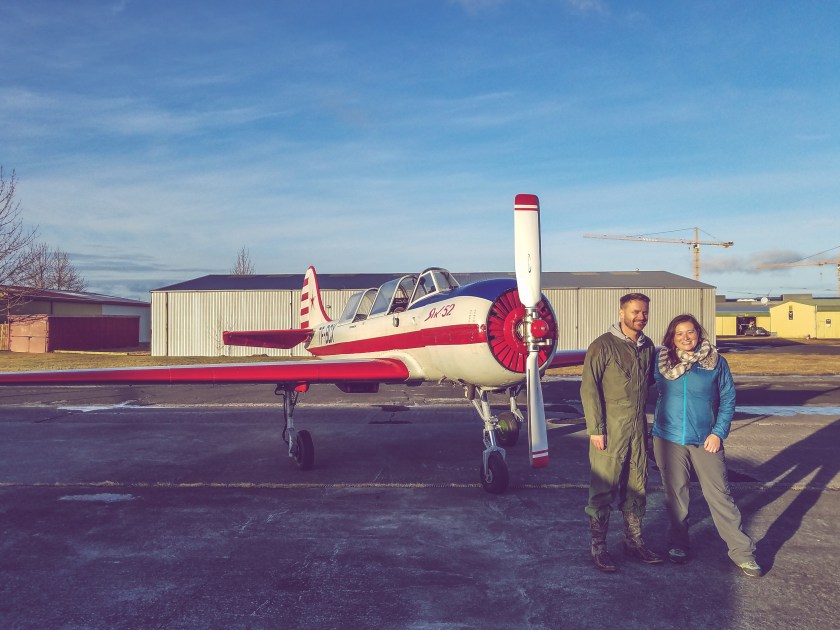
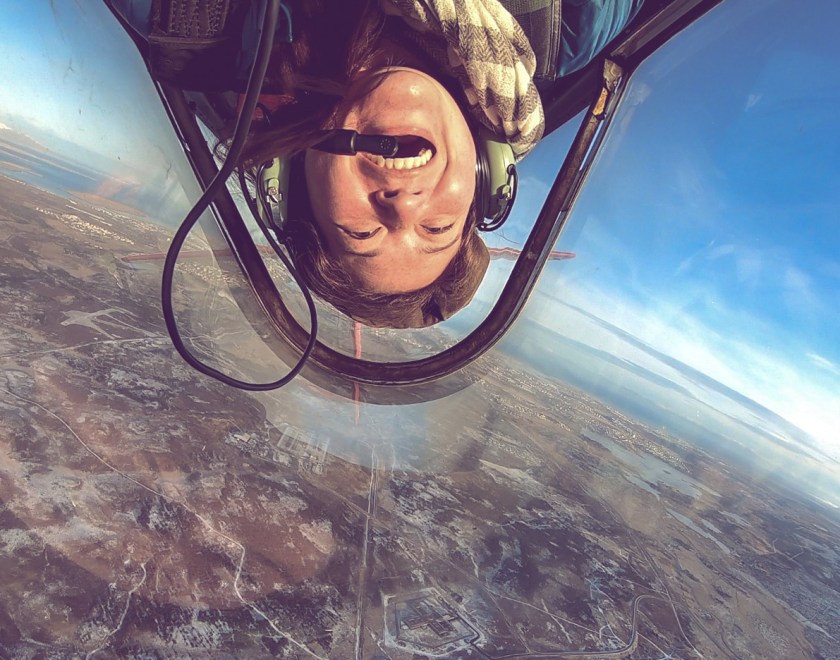
I met up with Julian and Snorri, both pilots, who own a couple Russian Yak Planes. I was given this amazing opportunity to go up in one of them and do some Air Aerobics. Snorri flipped the plane upside-down, nose dived, and spun us in circles. It was such a great experience for someone who is an adrenaline junkie. They are not technically a business, but if you are interested in a ride you can contact Snorri via email at bjarnvin@gmail.com
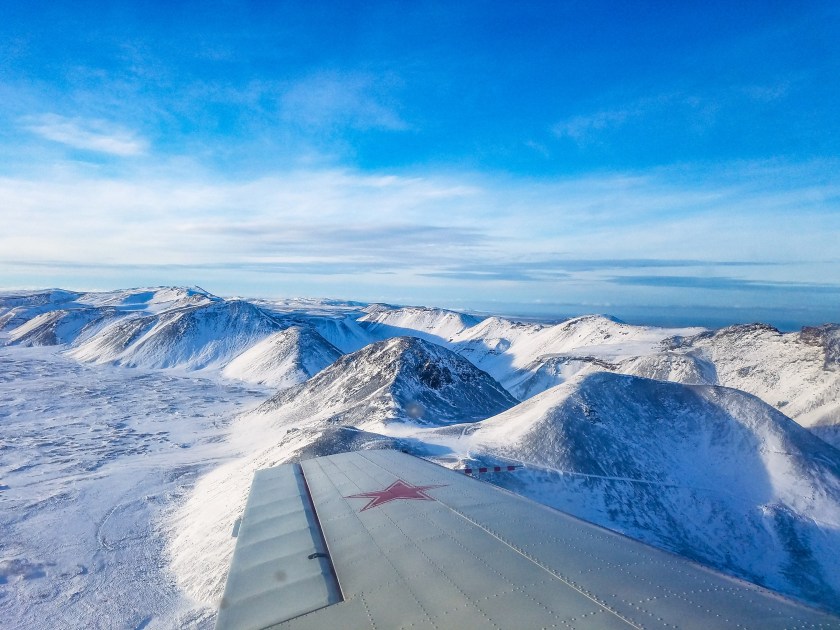
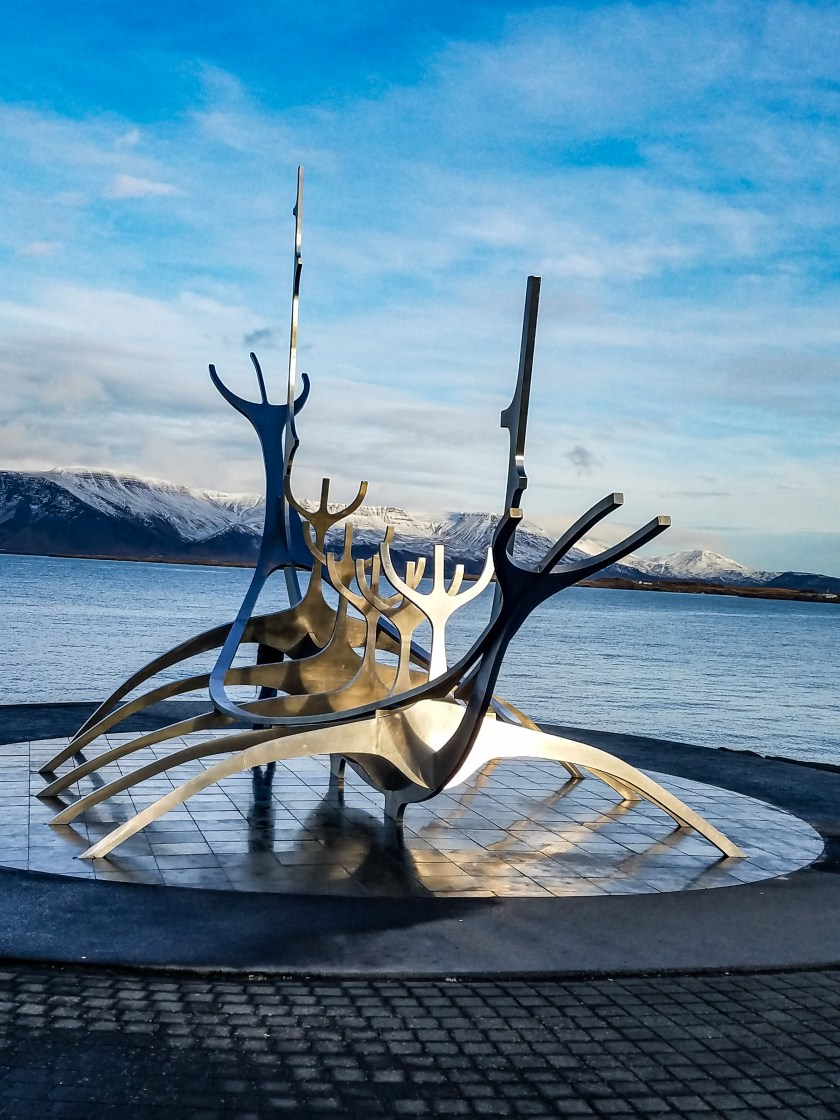
Sun Voyager was finished in 1990. It is a stainless still sculpture surrounded by granite stone as an ‘ode to the sun.’

Hallgrímskirkja is a Lutheran Church and the largest in Iceland. It took 45 years to finish building the church, 1945-1986. You can purchase tickets in the the gift shop to take the elevator up to the observation tower to get a look at the different colored roof tops of Reykjavik.
Harpa Concert Hall had it’s first concert in 2011. Construction had started in 2005, but was halted multiple times due to funding. The outer glass of the building was designed with the basalt columns in mind.
Golden Circle
Day 13:
The Golden Circle is 186 miles and takes around 3.5 hours to drive. It consists of three major tourist stops, but I added one more to the list.

þingvellir National Park is the first stop and you could probably spend all day here. There are marked trails that take you around the entire park, or you can drive to different parking lots to get closer to what you want to see. It was a nice day so I decided to walk with the intention of making it to see Öxarárfoss Waterfall. This time of year it had icicles and snow all around it. Definitely a must see waterfall on the Golden Circle. Parking lot 3 is the closest parking to this waterfall.
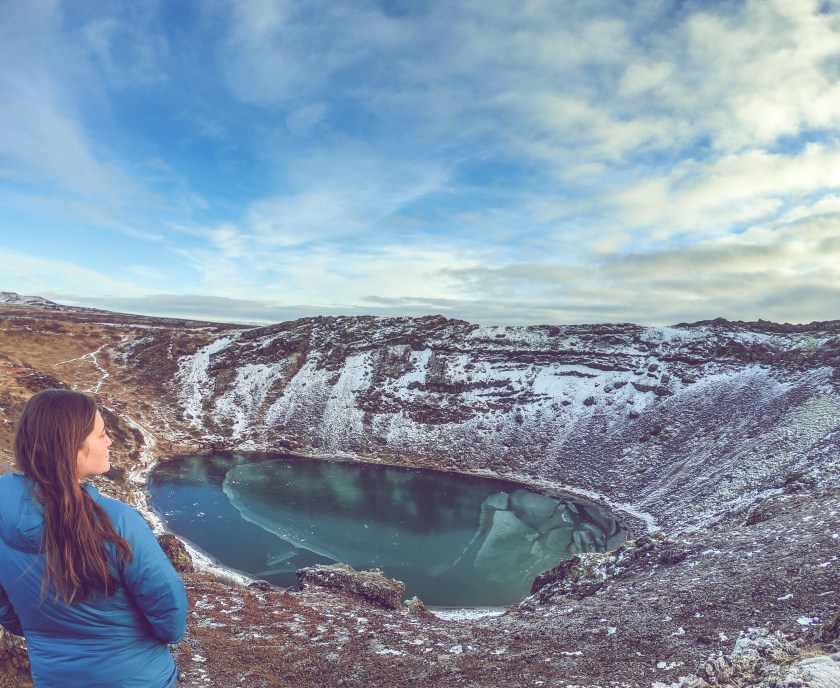
Kerið Crater is not one of the main three stops on the Golden Circle, but highly suggested. This 3,000 year old volcanic crater lake 180ft deep and 560ft wide. You can walk it’s entire outer crest and take the stairs down to the aqua blue water. There is a cost of 400 isk ($4 usd) to enter.
Geysir Geothermal Area is a natural hot spring that erupts every 3-5 minutes. Along the path are more smoking, bubbling hot springs, but they are too hot to touch reaching up to 212 degrees Fahrenheit.
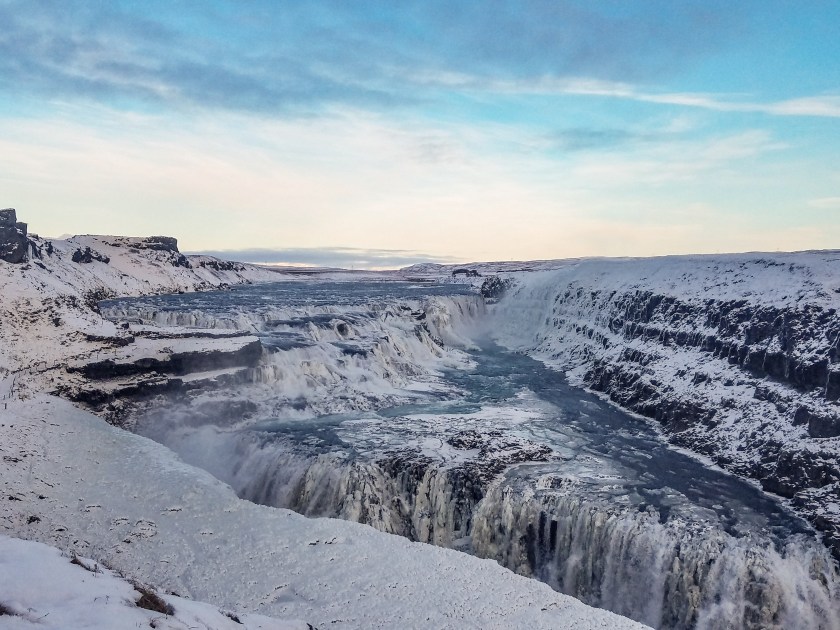
Gullfoss, my last waterfall of this trip. It has two tiers that drop from 36ft to 69ft with two viewing docks connected by a staircase or you can dive up to the the other parking lot.
Day 14:

Silfra is located in the þingvellir National Park and is the fissure between the North American and European tectonic plates. The body of water is glacier melt off from the 2nd largest glacier in Iceland making the water some of the clearest in the world and totally drinkable. Each year the plates drift apart about 2 cm with an estimated earthquake every ten years to relieve tension which then creates new fissures throughout the þingvellir valley.
At 4°C (37F) the water of the Silfra is freezing year round! Some companies will allow you to use a wetsuit at your own risk of hypothermia, so you can free dive down further with a snorkel, but I opted for a drysuit and couldn’t imagine being any colder. Because the drysuit fills with air, it makes you very bouyant and you can actually just lightly kick your fins to move through the beautiful blue, green, yellow, clear water.
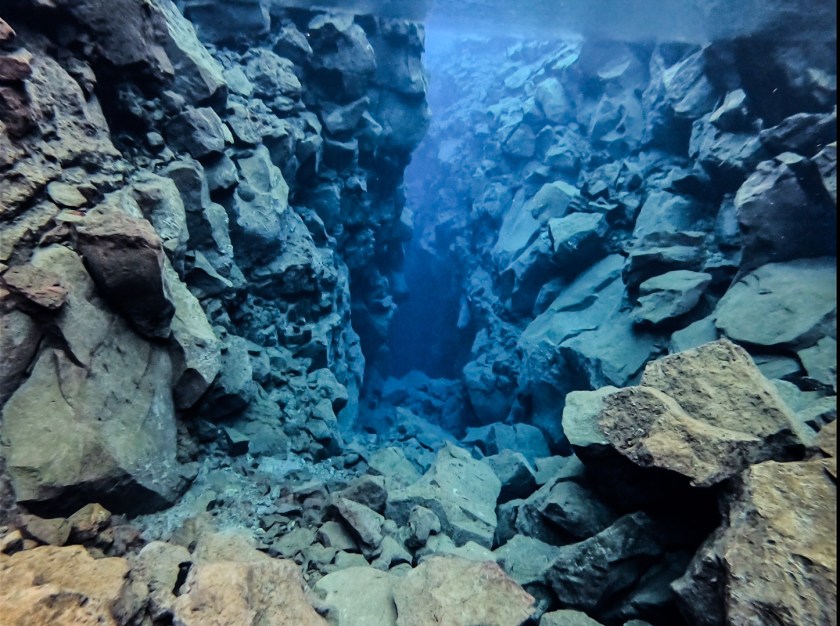
Unfortunately, it mean you are not able to dive deeper to touch both continents tectonic plate unless you are drysuit diving certified and go scuba diving. Swimming between them was enough for me. I went with a company called dive.is who were great and gave us hot chocolate and cookies at the end. You can choose to get a video or pictures sent to you for a fee. If you decide you want them, wait until you are at the site to request them, that way your guide will get a commission without any extra charge to you. They take cash and credit card at the snorkeling site.

Day 15:
Blue Lagoon, I had my reservations about going. Was it going to be too crowded? Is it too touristy to spend the money? The starting fee is $90 usd which includes one complementary mask, towel, and drink. You can upgrade and get a second mask along with a robe and slippers.

You must make a reservation online or there is not guarantee that you will be allowed in. I made my reservation for 8am, opening time. It was still busy, but not as crowded as I expected. The Blue Lagoon area is actually very large so you aren’t crammed into one small area as I had imagined. It was still dark out when I arrived, so the pool’s lights were still on, and it was pretty to watch the sun rise too. My final verdict is to go to the Blue Lagoon at least once. It really did make my skin feel soft and it was a perfect relaxing way to finish my trip after sleeping 14 nights in a camper van and getting ready to take a 10hr flight back home.
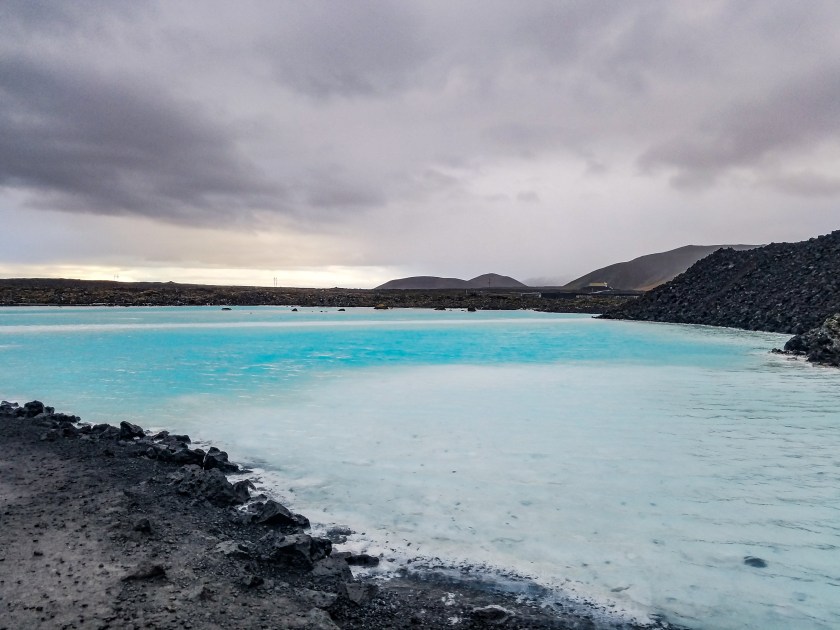
If you don’t want to pay money for the Blue Lagoon, but still want to see it’s milky blue waters, it is free to park there and walk the path around the outside of the facility. However, you are not permitted to bathe in that water.
If you have any questions about this trip, leave a comment below or you can shoot me a message on my instagram.com/offtheclocknurse
Pin now, read later:
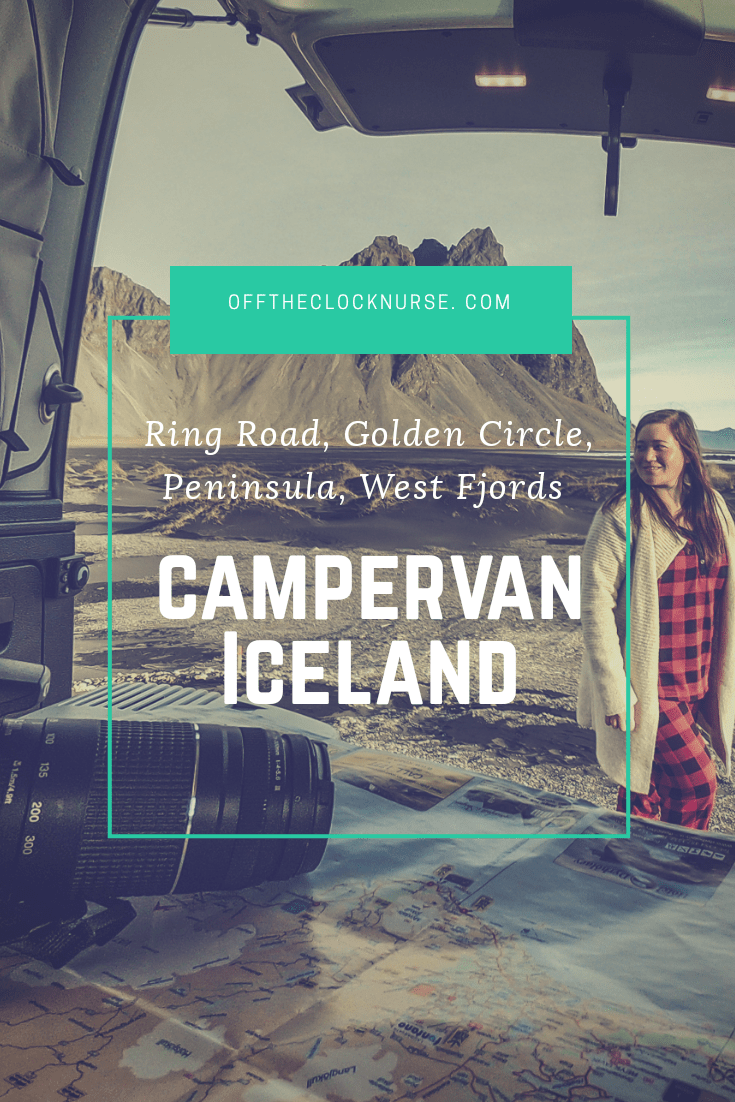
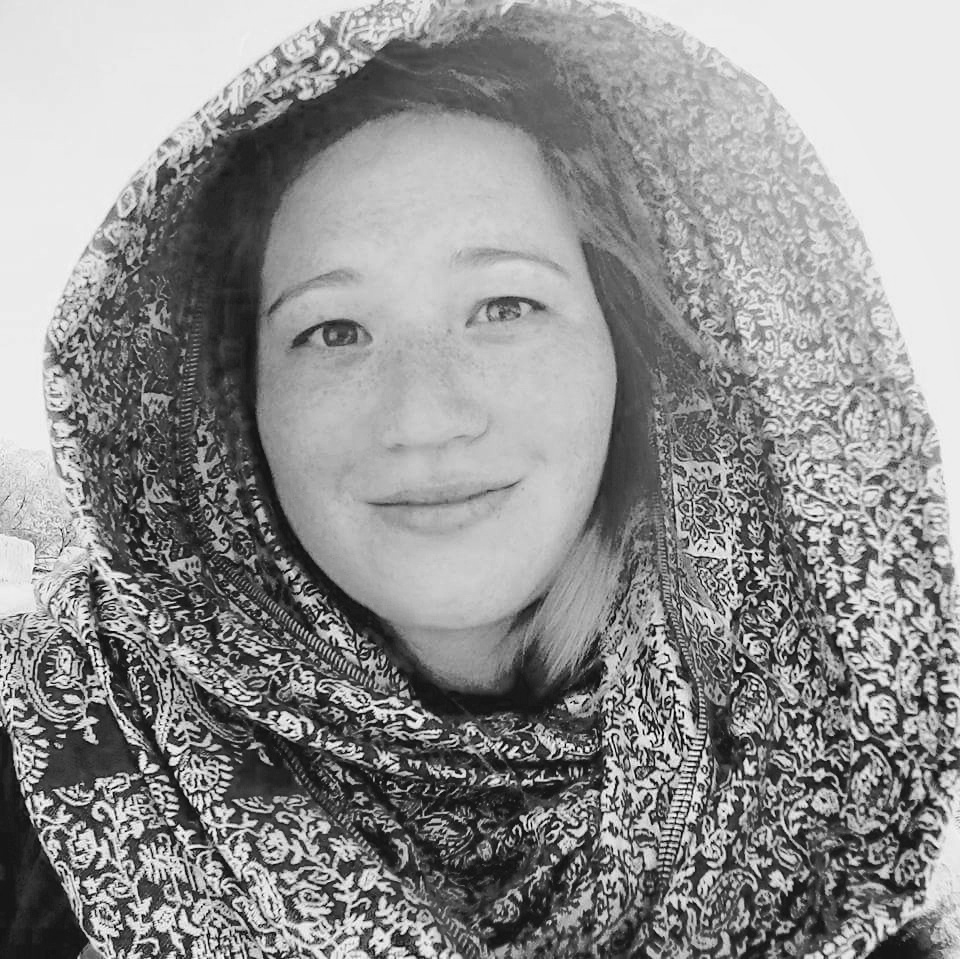

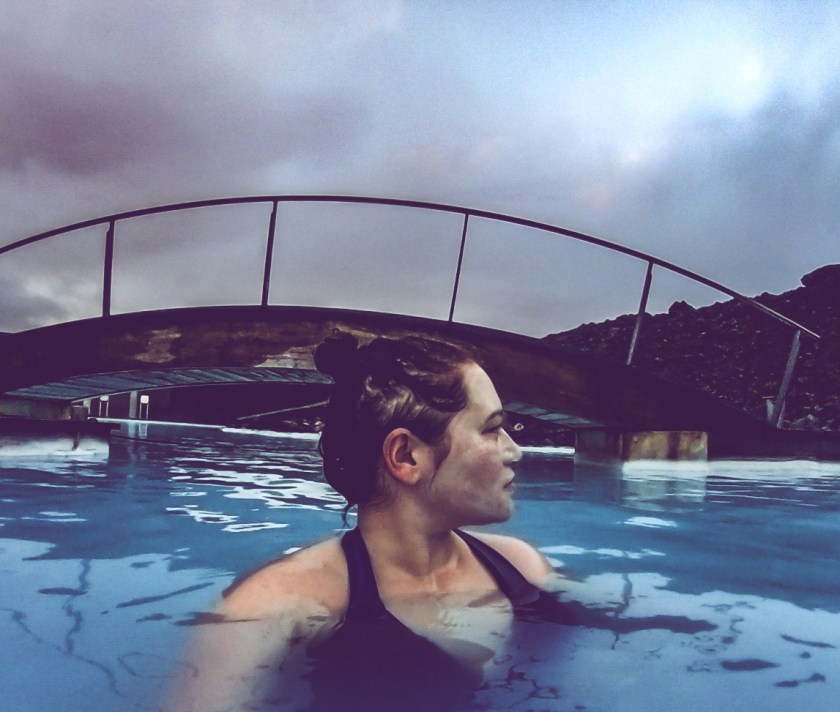

Your pictures are beautiful. What do you have?
LikeLike
I mostly use my GoPro Hero 6
LikeLike
This is soooooo inspiring and you are an incredible writer!!! Simply awesome!
LikeLike